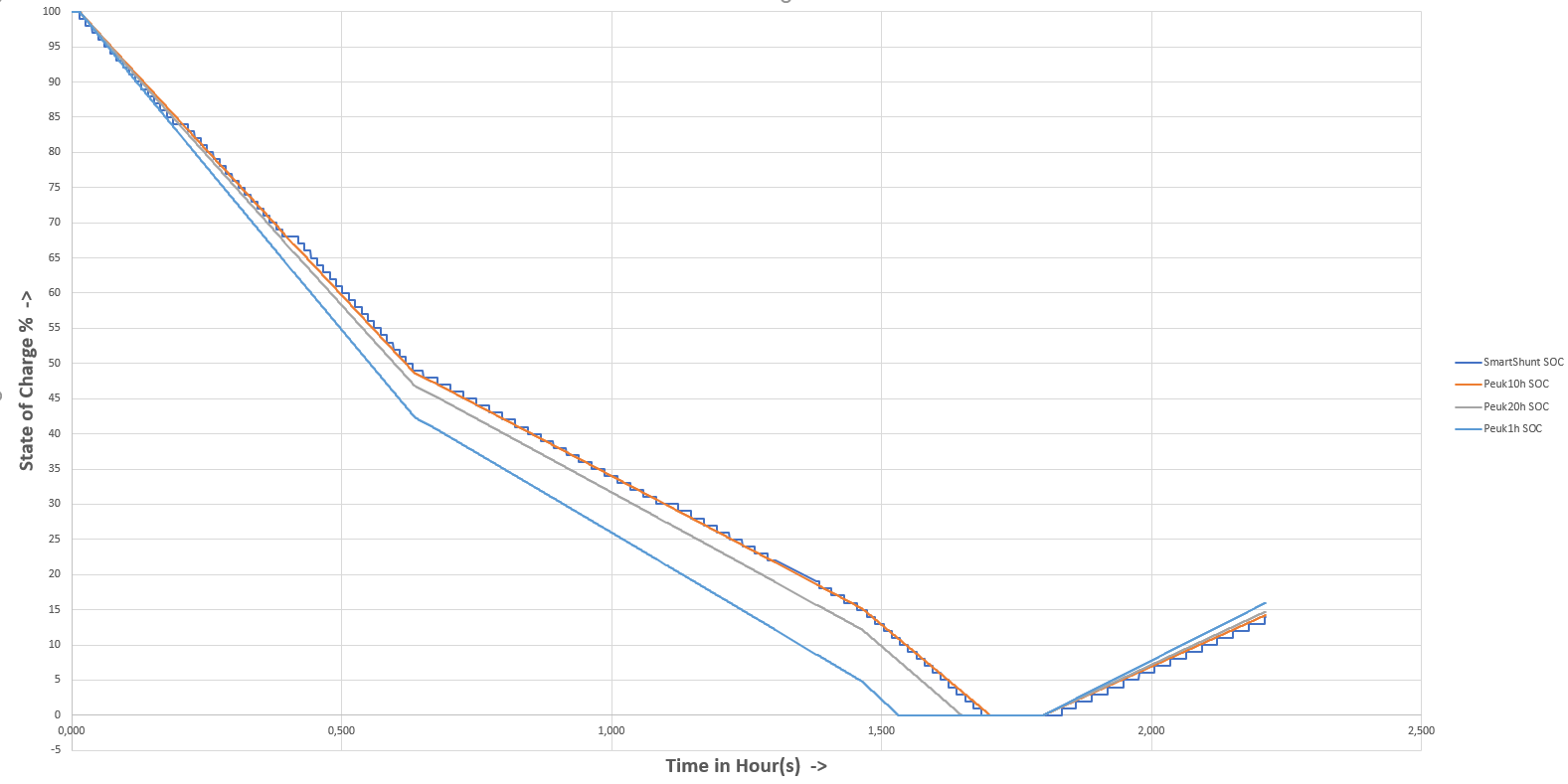Hello and good day to you all,
I'm considering using the Smartshunt 500A in a fair amount of boats so I did some testing. I setup the Smartshunt and a load. Started logging over VE-Direct storing the 'SOC' and 'Current' every second or so and made a nice graph. With the settings I made in the Smartshunt I tried to do the SOC calculation myself using the current and timestamps from the log file on the Peukert equation. I managed to get an exact match but only after I changed the 20hour discharge rate to 10hour (leaving the amount of Ah filled in with the Smartshunt and my equations the same). Can anyone confirm that the Smartsunt calculates "Peukert_t = dr*(Ah_rated/ (current*dr))^peukert_constant" ? where dr=discharge_rate=10 instead of 20.
I added the graph I made for reference. It has a load I changed a bit while discharging and added a little bit of charging at the end. I do regret rounding down the SOC numbers from VE-direct though.



